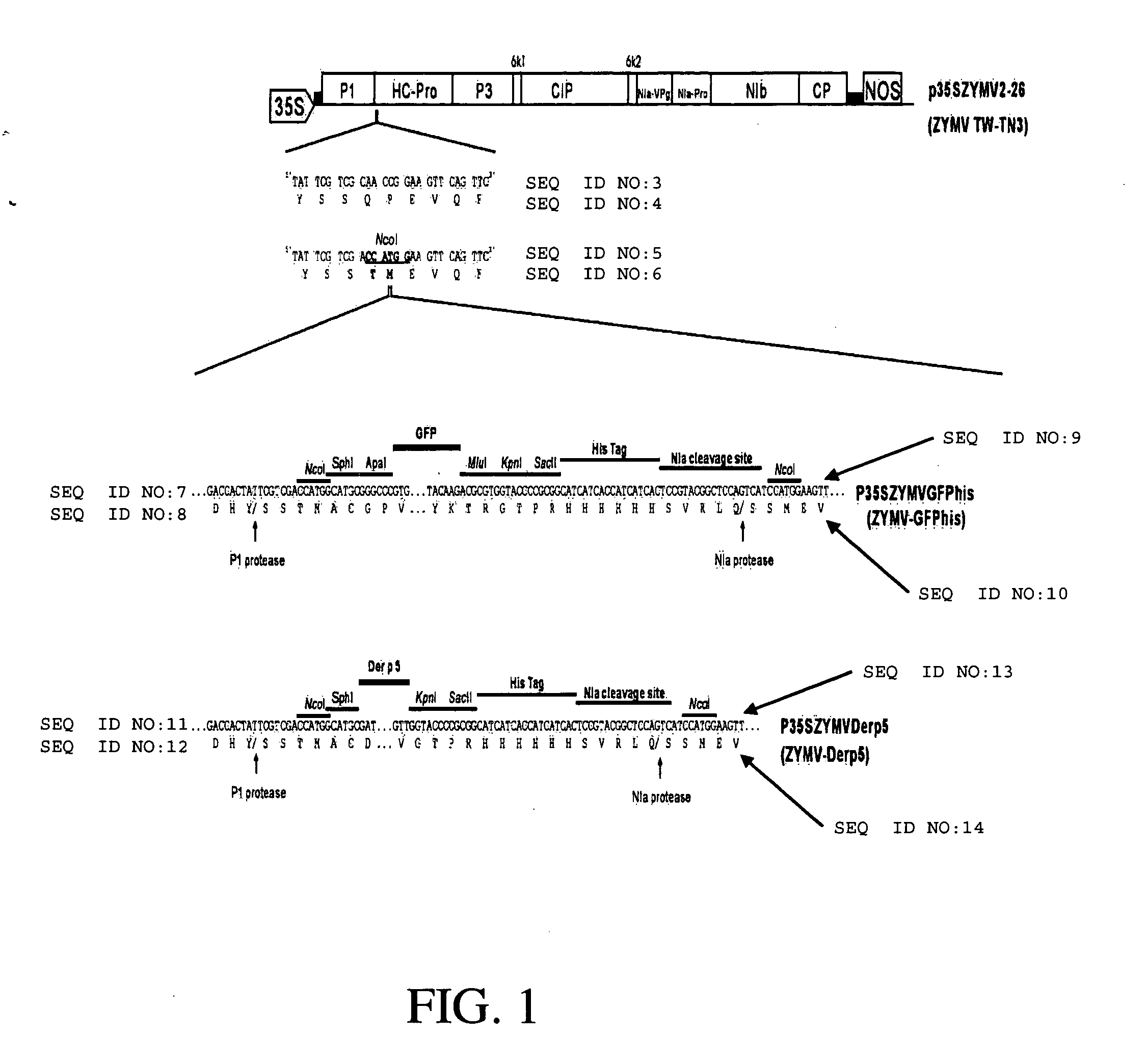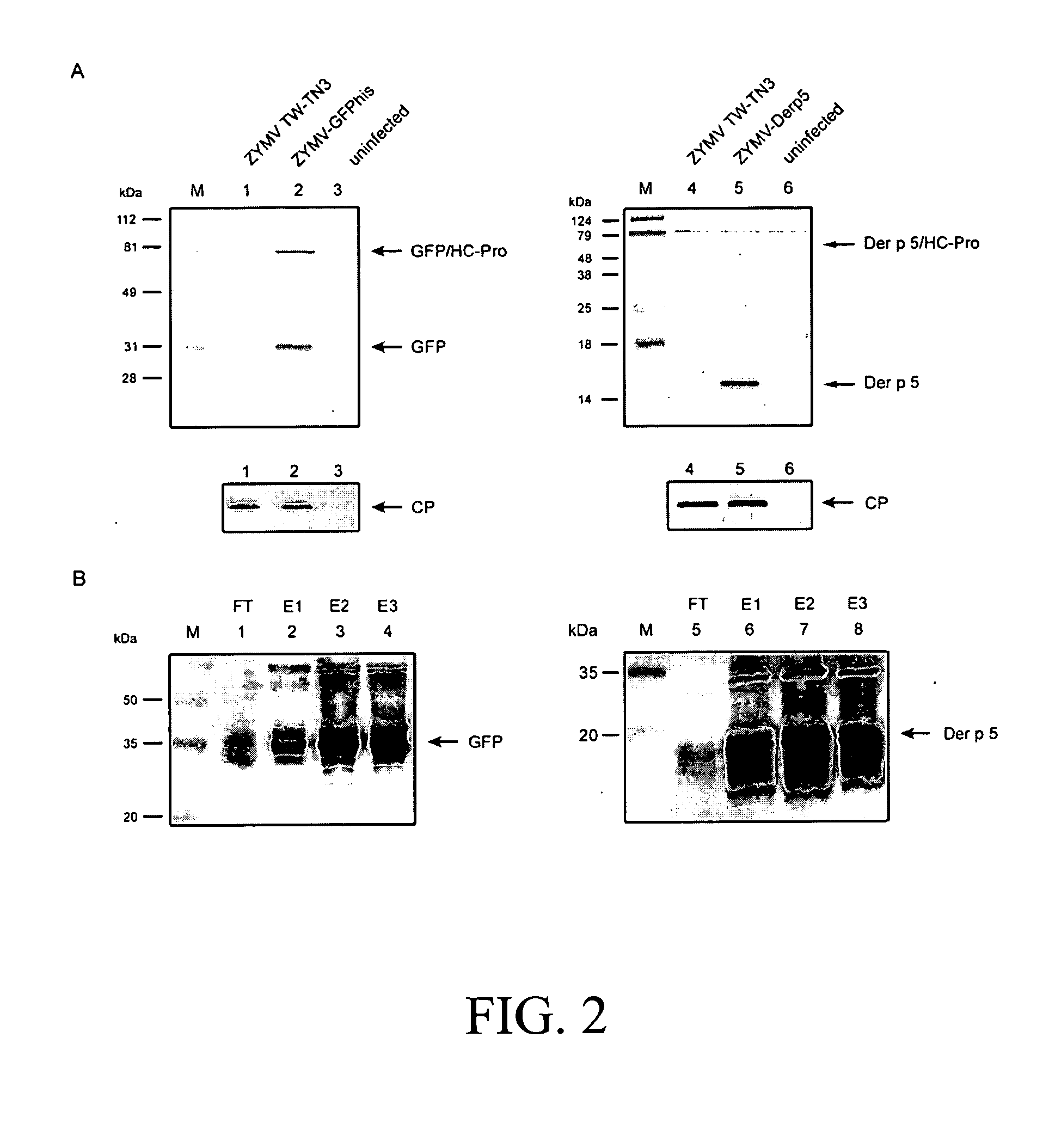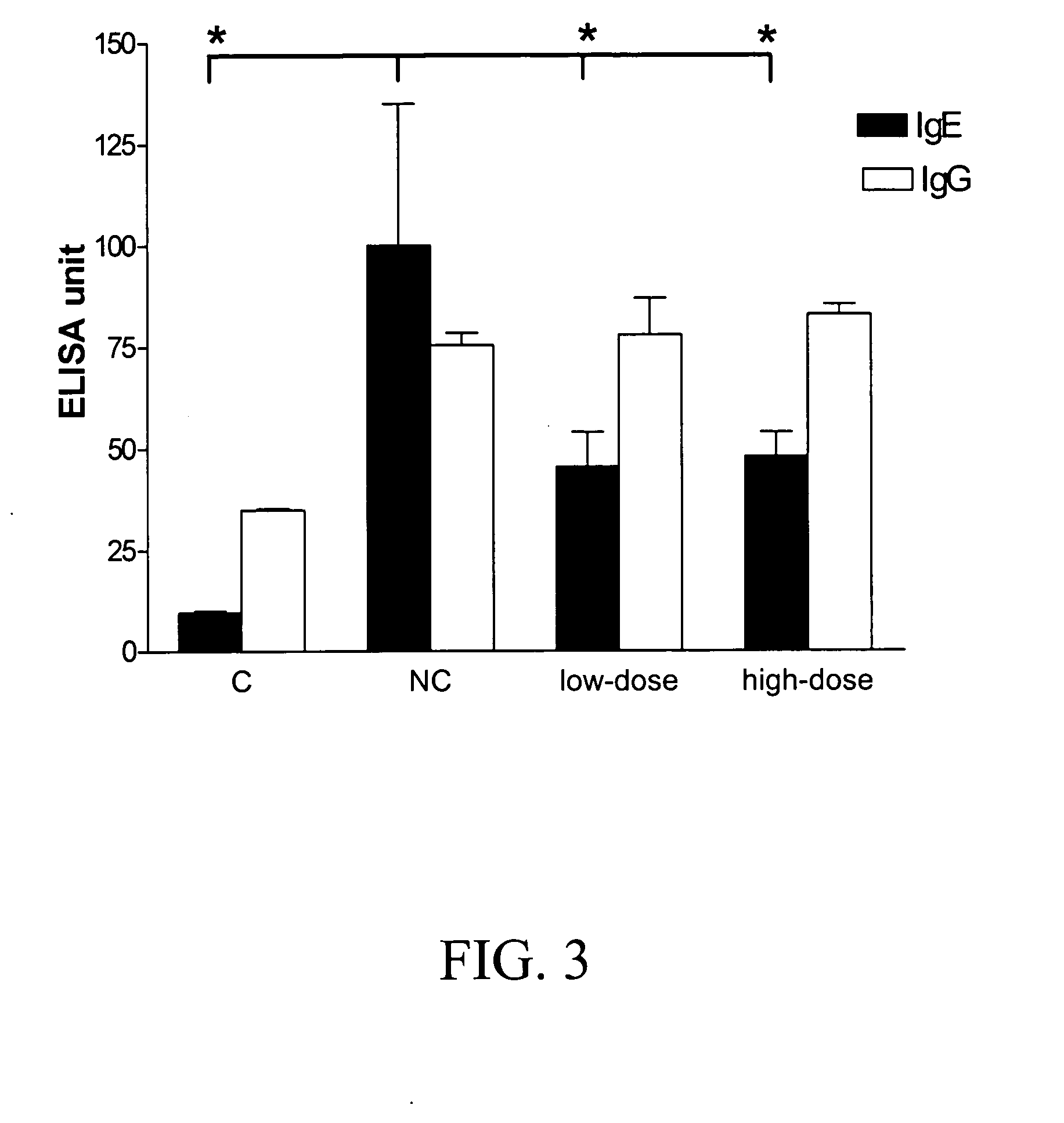Process for producing dust mite allergen
a technology for dust mites and allergens, applied in the field of process for producing dust mite allergens, can solve the problems of requiring relatively large quantities of antigens, unable to induce immune responses, and low amount of actual antigen that is absorbed
- Summary
- Abstract
- Description
- Claims
- Application Information
AI Technical Summary
Problems solved by technology
Method used
Image
Examples
example 1
Expression Dust Mite Allergen in A Transgenic Plant
[0064] Generation of ZYMV-Der p 5 recombinant plant virus: The development of ZYMV vector was based on the previously constructed infectious clone, p35SZYMV2-26 (Lin S S, Hou R F, Yeh S D. Construction of in vitro and in vivo infectious transcripts of a Taiwan strain of Zucchini yellow mosaic virus. Bot Bull Acad Sin 2002;43:261-269), which is driven by a Cauliflower mosaic virus (CaMV) 35S promoter to generate in vivo infectious transcript, to insert the ORF of GFP (Clontech) between the P1 and HC-Pro coding regions of ZYMV. The multiple cloning sites (Nco I, Sph I, Apa I, Mlu I, Kpn I, and Sac II) were created flanking the N- and C-terminis of GFP coding region by polymerase chain reaction (PCR) with designed primers. A hexahitidine (histidine-tag) and NIa protease motif of TW-TN3 (S-V-R-L-Q / S) were also created by PCR on the C-terminal end of GFP ORF. The new viral vector, harboring the report gene GFP, multiple cloning sites, a...
example 2
Animal Model of Treating Purified Der p 5
[0072] Animals and Study Protocol: Female BALB / c mice, aged between 6 and 8 weeks, obtained from the animal-breeding center of the College of Medicine, National Taiwan University (originated from The Jackson Laboratory, Bar Harbor, Me.), were divided into four groups for each experiment (Table 1). Mice were actively sensitized by intraperitoneal injection of 10 μg. of bDer p 5 with 4 mg of aluminium hydroxide (Wyeth Pharmaceuticals, Punchbowl, Australia). 14 and 21 days after the initial sensitization, mice were exposed to an aerosol of 0.1% of bDer p 5 purified from E. coli for 20 min. Aerosols were generated with an ultrasonic nebulizer (Devilbiss, Somerset, Pa.). The mean mass diameter of the aerosol was less than 4 μm. Eight hours after last inhalation challenge, the bronchoalveolar lavage fluids (BALF) and sera were collected. Seven days after sensitization, mice were treated with vDer p 5 (low-dose group, 1 mg / kg / Day; high-dose group, ...
example 3
Animal Model of Treating Leaves from Transgenic Plant Expressing Der p 5
[0078] Animals and Study Protocol: Female mice BALB / c, aged between 6 and 8 weeks, were obtained from the animal-breeding center of the College of Medicine, National Taiwan University (originated from The Jackson Laboratory, Bar Harbor, Me.), and were divided into 6 groups for the experiments shown in Table 2; wherein C represented Normal Control; NC represented Negative Control, in which the mice were sensitized and fed with ZYMV leaves (2 g / kg); PC represented Positive Control, in which the mice were sensitized and fed with eN-Lac (Lactobacillus paracasei, which was proved to effect on treating allergy) 1012 / day; Low-dose presents that the mice were sensitized and fed with ZYMV-Der p 5 leaves (200 mg / kg / day); High-dose presents that the mice were sensitized and fed with ZYMV-Der p 5 leaves (2 g / kg / day). Animals were actively sensitized by intraperitoneal injection of 10 μg of Der p 5 purified from E. coli wit...
PUM
| Property | Measurement | Unit |
|---|---|---|
| Electrical conductance | aaaaa | aaaaa |
| Composition | aaaaa | aaaaa |
| Immunogenicity | aaaaa | aaaaa |
Abstract
Description
Claims
Application Information
 Login to View More
Login to View More - R&D
- Intellectual Property
- Life Sciences
- Materials
- Tech Scout
- Unparalleled Data Quality
- Higher Quality Content
- 60% Fewer Hallucinations
Browse by: Latest US Patents, China's latest patents, Technical Efficacy Thesaurus, Application Domain, Technology Topic, Popular Technical Reports.
© 2025 PatSnap. All rights reserved.Legal|Privacy policy|Modern Slavery Act Transparency Statement|Sitemap|About US| Contact US: help@patsnap.com



